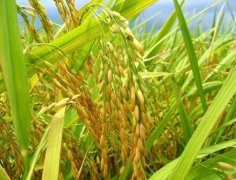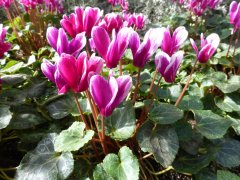Tainan 7, a new super high yield soybean variety, what are the agronomic characteristics of Tainan 7?
Tainan 7, a new variety of green manure soybean, was bred from green pea and green manure soybean by pure line breeding in Tainan agricultural improvement farm. The planting cost of this kind of soybean should not be low.
Tainan 7 has strong initial growth potential, high plant fresh grass, moisture, drought and cold tolerance, better weed inhibition than other green manure soybean varieties, longer growth period and complete field coverage. It can be used for green manure cultivation or orchard grass cultivation in two periods of fallow fields, and was reviewed and promoted by the crop new variety registration and naming review group convened by the Committee of Agriculture of the Executive Yuan in November 1991.
After China's accession to the World Trade Organization, how to effectively adjust the rice production area and encourage the cultivation of green manure to maintain soil fertility and pastoral landscape have been necessary measures for the current agricultural development. In the past, agriculture emphasized production, and the land could rest and recuperate for a short time, so it was suitable to plant short-term green manure. However, at present, the fallow period is as long as 123 ∼ and 137 days. If the fallow days of two periods a year are more than 200 days, it is more advantageous for green manure crops to have a long growth period, while Sesbania is more suitable for mechanical mulch application within 60 days after cultivation because of the Lignification of plants. As a result, it is necessary to plant green manure soybean twice in a fallow period in order to achieve the effect of planting green manure soybean once, resulting in an increase in the cost of sowing land preparation and cover application, and the growing spread of sesbania pests seriously harming crops, which highlights the demand for variety of green manure crops in fallow farmland.
Characteristics of new varieties
I. Agronomic characteristics
1. Growth habit: germinated about 3 ∼ 7 days after sowing. The number of flowering days is about 52 ∼ 93 days for spring cropping, 49 ∼ 85 days for summer cropping, and 40 ∼ 53 days for autumn cropping. The number of growth days was 203 ∼ 210d in spring cropping, 175 ∼ 186d in summer cropping, and 88 ∼ 100d in autumn cropping. For photosensitivity, the creeping growth of the plant belongs to infinite type.
two。 Maturity: late ripening.
3. Suitable planting period:
(1) Green manure cultivation: it can be planted all the year round.
(2) Grass cultivation in orchard: it can be planted all year round.
(3) seed production: it can be produced from late August to mid-October in Tainan area, the best sowing time is manual harvest from late August to late September, and the best sowing time is mid-October for mechanical harvest.
4. Disease resistance: without inoculation of pathogens and pesticide control, this variety did not develop purple spot and powdery mildew, and the incidence of dew fungus and rust was lower than that of tiger tail green pea.
5. Insect resistance: the damage ratio of wormhole area in plant leaves was lower than that of tiger tail green pea.
6. Mulching period: the growth period of spring cropping is about 200 days, and the field mulching period lasts 150 days. The branches and leaves of herbaceous cultivation in the orchard mature and dry on the ground without ploughing. Re-sowing in the next spring or proper irrigation after the natural drying up of the plant can enable pod seeds to sprout and regenerate, and there is no need to replant, which can save the cost of sowing a soil preparation.
7. Output:
(1) fresh grass yield: 19933 ∼ 45000 kg per hectare for 80 days in spring, 22150 ∼ 41500 kg per hectare in summer and 24700 kg per hectare in winter.
(2) seed yield: the yield of artificial harvest is 2014 ∼ 3344 kg per hectare, and that of mechanical harvest is about 1958 kg.
Second, plant characters
1. The average height of spring and summer mulch is 61.3cm and 62.8cm, respectively, and the main stem of herbaceous cultivation in orchard can reach 325cm ∼ 372cm, the length of main stem of autumn seed collection is about 112cm ∼ 171cm, and the number of branches is about 2.9∼ 3.7cm. The number of nodes in the main stem is 15.7 ∼ and 20.1.
two。 Seedlings: young stems purple.
3. Stem: growing stem green.
4. Leaves: three leaflets, leaf blade oval, leaf color emerald green.
5. Flowers: purple.
6. Pods: pods are sickle-shaped, dark brown, covered with brown velvet, 2 ∼ 3 seeds per pod.
7. Seeds: oval, seed coat brown, cotyledons yellow, navel brown, 100 seeds weighing 7 ∼ 9 grams.

- Prev

What are the four key points of rice seedling raising techniques? What materials are needed for the formula of rice seedling soil
Now rice is our most important food, and it is our staple food. How much do you know about the method of growing rice? Let's first take a look at the methods of raising rice seedlings. Seedling raising method 1. Compost one portion of seedbed soil with sawdust (each box weighs about 520 grams
- Next

Where is the origin of cyclamen? what are the characteristics? What are the points for attention in cyclamen planting?
Do you know cyclamen? Cyclamen belongs to Primulaceae, originated in central Europe, southern Europe, Palestine, minor Asia, Aegean islands to the eastern Mediterranean, but not more than Iran, there are about 24 original species. The underground storage organ is formed by hypertrophy of the Hypocotyl.
Related
- The first cup of black tea in spring, the flavor and history of tea gardens in Kenya, Africa
- The computer can not only choose potatoes, but also grow tea rice. AI will grow winter oolong tea champion.
- It is not only the inflated tea bitten by insects, but also engraved with the four seasons tea in Beipu.
- The Oriental Beauty Tea Festival in Zhuxian County takes the stage at the weekend to experience the plus-size feast of oil tea.
- & quot; Oriental Beauty Tea & Exploration of Emei in Hsinchu, the hometown of quot;
- The new variety of strawberry "Tainong 1" dessert is the first choice with mellow aroma. Crimson gorgeous
- History of Tea in Taiwan: from Wild Inner Mountain to Export Tea Garden
- Two types of Taiwan Oriental Beauty Black Tea won the British three-Star Award for Childhood Tea Xiang Zhang Jiaqi changed from pilot to champion tea maker.
- Banana species and varieties: the planting history of Taiwan Xianren banana and dwarf banana is long, is banana disease resistant?
- Coffee planting Technology: Qianjie Coffee from Seedling to harvesting

